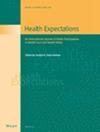Families' Perceptions of Powered Mobility for Participation in Children With Spinal Muscular Atrophy Type 1: A Photovoice Study
Abstract
Background and Purpose
Spinal muscular atrophy type 1 (SMA1) is a neuromuscular disorder that severely limits movement and autonomy in young children. Early powered mobility has proved to be a valuable intervention to promote participation, social engagement and emotional well-being. To understand the potential impact of powered mobility, it is critical to explore children and families' experiences with participatory methodologies, such as the photovoice method.
Objectives
To explore families' perceptions of powered mobility for participation in children with SMA Type 1, with a focus on emotional well-being, social engagement and accessibility.
Methodology
A qualitative descriptive study using the photovoice methodology was implemented, in which families documented their perceptions and experiences through photographs and reflective narratives over a period of 4 weeks. Children were encouraged to use a power mobility device in different activities in natural environments, after a training intervention of 12 weeks with power mobility. Families were asked to capture their experiences through photos and participate in different interviews to report their perceptions. Data was collected through photos documentation and during interviews.
Setting and Participants
This study was conducted in natural environments, home and community, in Spain. The participants were six children with SMA1 (aged 13–28 months) and their families.
Key Findings
Three major themes emerged: (1) Emotional and Social Engagement: Families reported that powered mobility enhanced children's confidence, emotional expression and ability to interact with family members and peers. (2) Barriers to Accessibility: Families encountered challenges such as limited home space, restricted public accessibility and the need for individualised adaptations. (3) Collaboration as a Key Factor: Parents emphasised the importance of collaboration with professionals in facilitating meaningful use of powered mobility.
Interpretation
The findings align with previous research demonstrating the benefits of powered mobility in promoting independence, social interaction and participation. However, this study also highlights persistent environmental barriers that continue to limit full social inclusion. Addressing these challenges is crucial to maximising mobility-related gains.
Conclusions and Implications
This study highlights the importance of addressing accessibility barriers and promoting interdisciplinary collaboration to maximise the benefits of powered mobility for children with SMA1. Incorporating participatory methodologies such as photovoice provides a powerful means for families to voice their experiences and advocate for inclusive mobility solutions.
Patient or Public Contribution
Families were actively involved in multiple stages of the study, including its design, data collection and interpretation and dissemination of the results. Using the photovoice method, parents documented their children's experiences with powered mobility through photographs and comments, highlighting both benefits and challenges. Their input was crucial in identifying real-life barriers and needs, ensuring that the study reflected the authentic experiences of families navigating powered mobility. Additionally, they provided valuable insights during interviews, contributing to a deeper understanding of the emotional, social and practical impacts of the intervention. Their perspectives helped to shape the analysis and reinforce the importance of personalised mobility solutions.


 求助内容:
求助内容: 应助结果提醒方式:
应助结果提醒方式:


